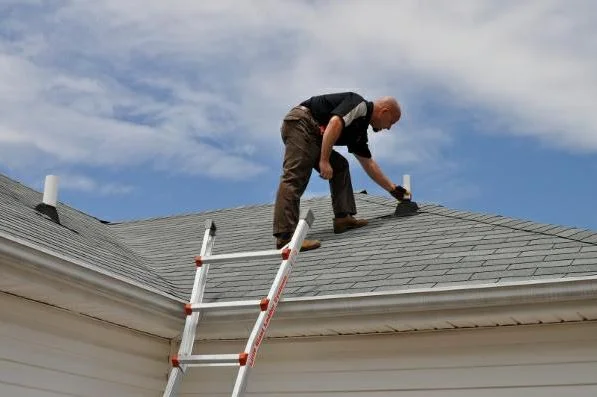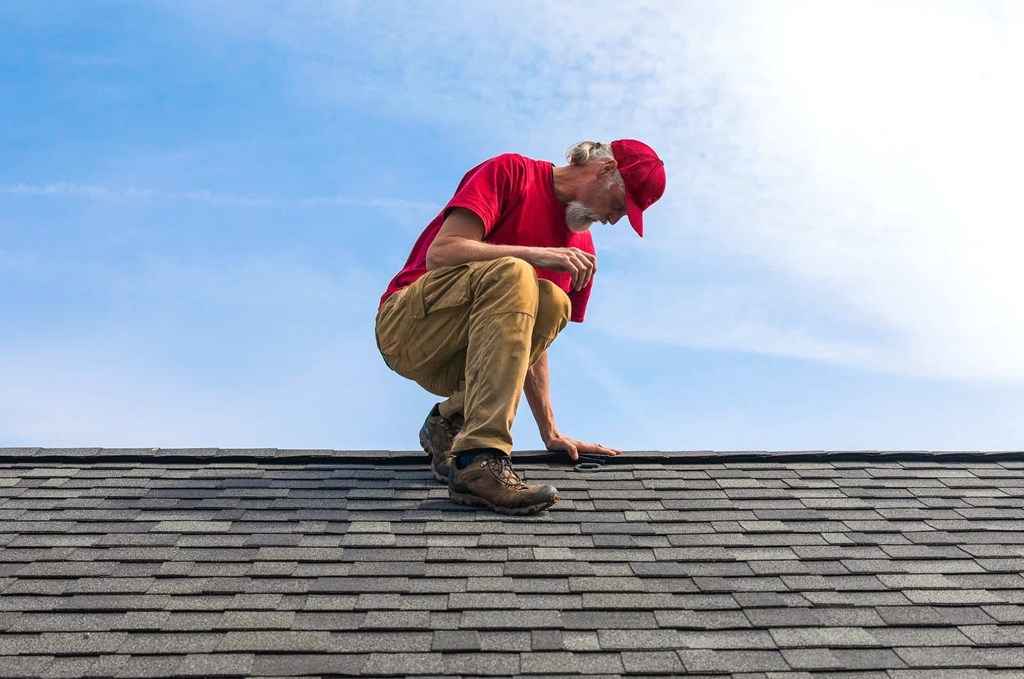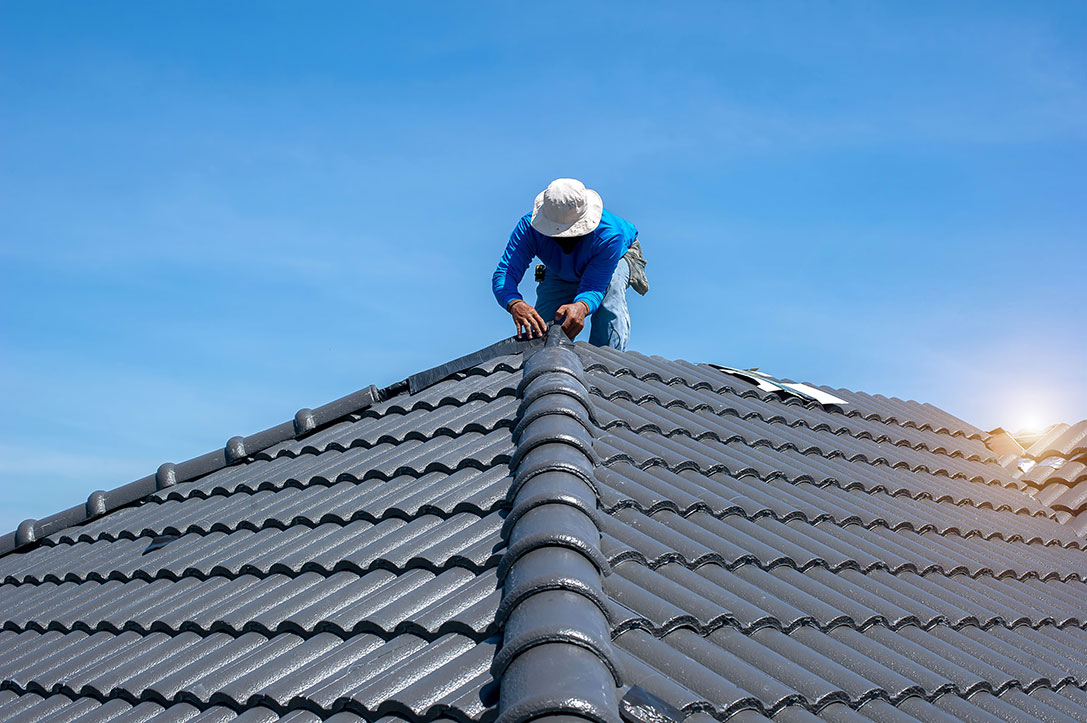Introduction
Roof maintenance is an essential aspect of homeownership that is often overlooked. Many homeowners neglect the regular upkeep of their roofs, only to face costly repairs and premature roof replacements down the line. However, with proper maintenance, homeowners can extend the life of their roofs and save money in the long run. In this article, we will explore the importance of roof maintenance, the different types of roofing materials and their maintenance needs, how to identify signs of roof damage, the importance of regular roof inspections, DIY roof maintenance tips for homeowners, when to hire professional roof maintenance services, common roofing problems and how to fix them, roofing safety tips, and a roofing maintenance checklist.
Introduction to Roof Maintenance: Why It Matters
Roof maintenance is crucial for several reasons. Firstly, regular maintenance helps prevent costly repairs. By identifying and addressing minor issues early on, homeowners can avoid major problems that require extensive repairs or even a complete roof replacement. Additionally, proper maintenance extends the life of the roof. A well-maintained roof can last significantly longer than one that is neglected. This means that homeowners can delay the expense of a new roof installation and save money in the long run.
Neglecting roof maintenance can have serious consequences. One of the most common issues that arise from lack of maintenance is leaks. Leaks can lead to water damage, mold growth, and structural issues within the home. These problems not only compromise the integrity of the roof but also pose health risks to the occupants of the house. Furthermore, neglecting roof maintenance can void warranties provided by roofing manufacturers. This means that if a problem arises with the roof, homeowners may be responsible for covering the costs themselves.
Types of Roofing Materials and Their Maintenance Needs
Different types of roofing materials have unique maintenance needs. Understanding these needs is essential for proper roof maintenance. Here are some common roofing materials and tips for maintaining them:
1. Asphalt Shingles: Asphalt shingles are the most popular roofing material due to their affordability and durability. To maintain asphalt shingles, homeowners should regularly inspect for damage, such as missing or damaged shingles, and replace them as needed. It is also important to keep the roof clean by removing debris and cleaning gutters to prevent water buildup.
2. Metal Roofing: Metal roofs are known for their longevity and resistance to harsh weather conditions. To maintain a metal roof, homeowners should inspect for loose or damaged panels and tighten or replace them as necessary. It is also important to keep the roof clean by removing debris and checking for any signs of corrosion.
3. Tile Roofing: Tile roofs are durable and can last for decades with proper maintenance. To maintain a tile roof, homeowners should regularly inspect for cracked or broken tiles and replace them promptly. It is also important to keep the roof clean by removing debris and checking for any signs of moss or algae growth.
4. Wood Shake Shingles: Wood shake shingles provide a natural and rustic look to a home. To maintain wood shake shingles, homeowners should regularly inspect for signs of rot or decay and replace any damaged shingles. It is also important to keep the roof clean by removing debris and checking for any signs of moss or algae growth.
Signs of Roof Damage: How to Identify Them
Identifying signs of roof damage is crucial for timely repairs and maintenance. Here are some common signs of roof damage to look out for:
1. Leaks: Water stains on ceilings or walls are a clear indication of a roof leak. Homeowners should inspect their attic for any signs of water intrusion, such as damp insulation or water stains on the rafters.
2. Cracks: Cracks in the roof can lead to leaks and further damage if not addressed promptly. Homeowners should inspect their roofs for any visible cracks or gaps in the roofing material.
3. Missing Shingles: Missing shingles can leave the roof vulnerable to water damage and leaks. Homeowners should regularly inspect their roofs for any missing or damaged shingles and replace them as needed.
4. Curling or Buckling Shingles: Curling or buckling shingles are a sign of aging and weathering. Homeowners should inspect their roofs for any shingles that are curling or buckling and consider replacing them to prevent further damage.
5. Granule Loss: Granule loss on asphalt shingles is a sign of aging and can lead to premature deterioration. Homeowners should inspect their roofs for any areas where the granules have worn off and consider replacing the affected shingles.
6. Sagging Roof: A sagging roof is a serious issue that requires immediate attention. Homeowners should inspect their roofs for any signs of sagging or dipping and contact a professional roofer to assess the situation.
Importance of Regular Roof Inspections
Regular roof inspections are essential for identifying and preventing potential issues. Here are some reasons why regular roof inspections are important:
1. Early Detection of Problems: Regular inspections allow homeowners to identify and address minor issues before they become major problems. By catching issues early on, homeowners can save money on costly repairs or even a complete roof replacement.
2. Extending the Life of the Roof: Regular inspections and maintenance can significantly extend the life of the roof. By addressing minor issues promptly, homeowners can prevent further damage and prolong the lifespan of their roofs.
3. Maintaining Warranty Coverage: Many roofing manufacturers require regular inspections and maintenance to maintain warranty coverage. By scheduling regular inspections, homeowners can ensure that they comply with warranty requirements and avoid potential issues with coverage.
4. Peace of Mind: Regular inspections provide homeowners with peace of mind knowing that their roof is in good condition. This can alleviate concerns about leaks, structural damage, and other issues that can arise from a neglected roof.
To schedule regular roof inspections, homeowners can contact a professional roofing contractor. It is recommended to have a roof inspection at least once a year, preferably in the spring or fall when the weather is mild.
DIY Roof Maintenance Tips for Homeowners
While some aspects of roof maintenance require professional expertise, there are several tasks that homeowners can do themselves to maintain their roofs. Here are some DIY roof maintenance tips for homeowners:
1. Cleaning Gutters: Clogged gutters can lead to water buildup and damage to the roof. Homeowners should regularly clean their gutters to remove leaves, debris, and other obstructions.
2. Removing Debris: Debris, such as leaves, branches, and dirt, can accumulate on the roof and in the gutters. Homeowners should regularly remove debris from the roof to prevent water buildup and potential damage.
3. Trimming Overhanging Branches: Overhanging branches can damage the roof and provide a pathway for pests to access the home. Homeowners should trim any overhanging branches to prevent them from rubbing against the roof or causing damage during storms.
4. Checking Flashing: Flashing is the material used to seal joints and prevent water intrusion. Homeowners should regularly inspect the flashing around chimneys, vents, and skylights for any signs of damage or deterioration and repair or replace them as needed.
5. Inspecting Attic Ventilation: Proper attic ventilation is essential for maintaining the health of the roof. Homeowners should inspect their attic ventilation to ensure that it is functioning properly and clear any obstructions that may impede airflow.
It is important to note that safety should be a top priority when conducting DIY roof maintenance. Homeowners should use proper safety equipment, such as gloves, goggles, and sturdy footwear, and avoid working on the roof during inclement weather or when it is wet or slippery.
Professional Roof Maintenance Services: When to Hire Them
While homeowners can handle some aspects of roof maintenance themselves, there are situations in which it is best to hire professional roof maintenance services. Here are some situations in which homeowners should consider hiring professionals:
1. Major Repairs: If the roof requires major repairs, such as replacing a large number of shingles or addressing structural issues, it is best to hire professionals. They have the expertise and equipment to handle complex repairs safely and effectively.
2. Roof Replacement: If the roof is nearing the end of its lifespan or has sustained extensive damage, it may be time for a roof replacement. Professional roofers can assess the condition of the roof and recommend the best course of action.
3. Safety Concerns: Roof maintenance can be dangerous, especially for homeowners without experience or proper safety equipment. If there are safety concerns, such as steep slopes or difficult access points, it is best to hire professionals who are trained to work in such conditions.
4. Lack of Time or Expertise: Some homeowners may simply not have the time or expertise to properly maintain their roofs. In such cases, hiring professionals ensures that the roof receives the necessary care and attention it needs.
When hiring professional roof maintenance services, it is important to select a reputable roofing contractor. Homeowners should research and compare different contractors, read reviews, and ask for references before making a decision. It is also recommended to obtain multiple quotes to ensure a fair price.
Common Roofing Problems and How to Fix Them
Despite regular maintenance, roofing problems can still occur. Here are some common roofing problems and how to fix them:
1. Leaks: Leaks can occur due to damaged or deteriorated roofing materials, flashing issues, or improper installation. To fix a leak, homeowners should identify the source of the leak and repair or replace the affected area. It is recommended to hire professionals for complex leak repairs.
2. Damaged Shingles: Shingles can become damaged due to weathering, impact, or improper installation. To fix damaged shingles, homeowners should remove the damaged shingle and replace it with a new one. It is important to ensure that the replacement shingle matches the existing ones in terms of color and style.
3. Clogged Gutters: Clogged gutters can lead to water buildup and damage to the roof. To fix clogged gutters, homeowners should remove any debris or obstructions and ensure that the gutters are properly sloped to allow for proper drainage.
4. Moss or Algae Growth: Moss or algae growth on the roof can cause damage and lead to premature deterioration. To fix moss or algae growth, homeowners can use a solution of water and bleach to clean the affected areas. It is important to follow safety precautions and protect surrounding vegetation during the cleaning process.
5. Ice Dams: Ice dams occur when snow melts and refreezes at the edge of the roof, causing water to back up under the shingles. To fix ice dams, homeowners can use a roof rake to remove snow from the roof or install heating cables to prevent ice buildup.
It is important to note that while minor repairs can be done by homeowners, complex repairs or those involving safety risks should be left to professionals.
Roofing Safety Tips: Protecting Yourself and Your Property
Roof maintenance can be dangerous if proper safety precautions are not taken. Here are some roofing safety tips to protect yourself and your property:
1. Use Proper Safety Equipment: When working on the roof, homeowners should wear gloves, goggles, and sturdy footwear to protect themselves from potential hazards.
2. Avoid Working Alone: It is recommended to have someone else present when working on the roof. They can assist if needed and help in case of an emergency.
3. Check Weather Conditions: Roof maintenance should not be done during inclement weather or when the roof is wet or slippery. Homeowners should check the weather forecast and choose a day with mild and dry conditions.
4. Use Ladders Safely: When using a ladder to access the roof, homeowners should ensure that it is stable and secure. The ladder should be placed on a level surface and secured at the top to prevent it from slipping.
5. Protect Surrounding Property: When conducting roof maintenance, homeowners should take precautions to protect surrounding property. This includes covering plants and shrubs to prevent damage from falling debris or cleaning solutions.
6. Know Your Limits: Homeowners should know their limits and not attempt roof maintenance tasks that are beyond their capabilities. If a task seems too challenging or unsafe, it is best to hire professionals.
Roofing Maintenance Checklist: What to Include
To ensure comprehensive roof maintenance, homeowners should include the following tasks in their regular maintenance routine:
1. Inspect the Roof: Regularly inspect the roof for signs of damage, such as leaks, cracks, missing shingles, or damaged flashing.
2. Clean Gutters: Clean gutters regularly to remove debris and ensure proper drainage.
3. Remove Debris: Remove debris from the roof to prevent water buildup and potential damage.
4. Trim Overhanging Branches: Trim any overhanging branches to prevent damage to the roof and deter pests.
5. Check Flashing: Inspect flashing around chimneys, vents, and skylights for signs of damage or deterioration.
6. Inspect Attic Ventilation: Check attic ventilation to ensure proper airflow and clear any obstructions.
7. Schedule Regular Inspections: Schedule professional roof inspections at least once a year, preferably in the spring or fall.
8. Address Minor Repairs Promptly: Address minor repairs promptly to prevent further damage and costly repairs.
9. Keep Records: Keep records of roof maintenance and repairs for future reference and warranty purposes.
Conclusion: Maintaining Your Roof for Longevity and Cost Savings
In conclusion, roof maintenance is a crucial aspect of homeownership that should not be overlooked. Regular maintenance helps prevent costly repairs, extends the life of the roof, and provides peace of mind to homeowners. By understanding the unique maintenance needs of different roofing materials, identifying signs of roof damage, scheduling regular inspections, and conducting DIY maintenance tasks, homeowners can ensure the longevity of their roofs and save money on costly repairs. It is important to prioritize roof maintenance in the overall home maintenance routine to protect one of the most important investments – the home itself.



